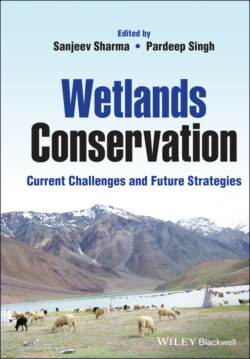Читать книгу Wetlands Conservation - Группа авторов - Страница 24
2.2 The Ramsar Convention
ОглавлениеAfter the MAR conference in 1962, a series of meetings were held in different parts of the world such as St. Andrews (1963), Noordwijk (1966), Morges (1967), Leningrad (1968), Vienna (1969), Moscow (1969), Espoo (1970), and Knokke (1970). During these eight years of deliberations, the official document for “Convention on Wetlands of International Importance” was finalized. The Convention was initially scheduled to be organized at the city of Babolsar in Iran, but the venue was later shifted to the resort town of Ramsar located on the shores of the Caspian Sea and having better connectivity and access to logistics (Carp 1972; Matthews 1993). The Ramsar Convention was organized on 2 February 1971 by the Game and Fish Department of Iran. The Ramsar Convention was officially named “The Convention on Wetlands of International Importance especially as Waterfowl Habitat.” The convention was attended by official delegates from 18 nations which included Germany, India, Iran, Ireland, Jordan, the Netherlands, Pakistan, South Africa, Spain, Sweden, Switzerland, Turkey, the USSR, and the United Kingdom. Observers from five other countries, namely Bulgaria, Greece, Hungary, Italy, and Romania, also attended the convention. In addition, delegates from various intergovernmental agencies (like FAO and UNESCO) and nongovernmental organizations (like CIC, IBP, ICBP, IUCN, IWRB, and WWF) were also among those who attended the convention (Matthews 1993; Ramsar Convention Secretariat 2011).
The treaty was agreed on 2 February 1971 and signed by the representatives of 18 nations on 3 February 1971. As per terms laid down in convention, the Ramsar Convention would come into force only after being ratified by at least seven countries, which was fulfilled in December 1975 upon ratification by Greece (Matthews 1993). In the subsequent years, as the concerns about wetland conservation gained momentum, more nations joined the Ramsar Convention. As of October 2019, there are 171 members of the Ramsar Convention with a global count of 2390 Ramsar sites spread over an area of more than 2.5 million km2 (Ramsar Sites Information System 2020). The goal of Ramsar Convention emphasizes that “the loss of wetlands, any further, would be irreparable,” to people, and aims to “stem the loss and degradation of wetlands now and in the future,” through the wise‐use of all wetlands; designation and management of Wetlands of International Importance (“Ramsar Sites”) and international cooperation (Davidson 2014).
